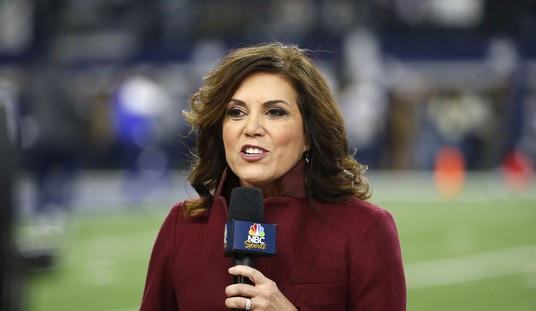Yes we do … but does the White House? Do Democrats? Ron Klain tried to slough off inflation as a “high-class problem” in October, but the Washington Post rightly features its corrosive effects on the working class today. The reduction in buying power, especially in housing prices, has lower-income Americans in “survival mode”:
Lower-income workers like Rodriguez have seen some of the fastest wage growth of the pandemic era. But those gains are being eroded by the highest inflation in 40 years, and Rodriguez’s paycheck doesn’t go as far as it used to. A mother of three, Rodriguez has to budget $200 a week for child care and $200 a month for the water bill. The pack of paper towels she buys went from $14 to $18.
“It’s outrageous how much everything has gone up,” Rodriguez said. “I go to the supermarket to buy chicken, and I have to make a decision on what meal I’m going to cook based on the prices. … I’m not going to buy anything luxurious. Everything is more expensive.”
While inflation is rising everywhere, price hikes are particularly devastating to lower-income households with already tight budgets. Nearly all their expenses go to necessities — food, energy, housing — which have seen some of the largest increases at different points over the past year. …
With their substantial disposable incomes, higher-income households can, of course, more easily absorb the rising cost of necessities.
This obvious fact appears to have eluded Joe Biden, Chuck Schumer, and Nancy Pelosi. They have spent the past several months either ignoring inflation or attempting to cast it as actual economic growth. In fact, even after several months of record-breaking increases in inflation — especially in food and energy prices, where lower-income families feel it most — Biden still has no answer for inflation. The best he could do last week was to call Lester Holt a “wise guy” for bringing up Biden’s bon mot from last summer promising that inflation would be “temporary” … and then redefine “temporary” to a “taper off” sometime at the end of the year.
An even bigger problem for Democrats is that they still have no plan to deal with inflation. For the moment, neither does the Federal Reserve, although they know that the task will fall to them:
Federal Reserve officials are pushing back on the idea that central bankers might raise interest rates in between meetings and made it clear that while they are poised to begin lifting rates in March, the initial increase may be smaller than what investors have begun to expect.
Markets began to bet on a double-size rate increase — half a percentage point — after January inflation data came in surprisingly high last week. Those expectations grew after the Federal Reserve Bank of St. Louis president, James Bullard, suggested that the Fed might need to respond decisively with a large increase or even an inter-meeting move, something the central bank typically reserves for emergencies.
Mr. Bullard seemed to walk back his comments slightly on Monday, acknowledging during a CNBC interview that he is just one policy official and that Fed chair, Jerome H. Powell, will lead on deciding how quickly to pull back support. He reiterated that he would like to see a rapid pace of increases, taking rates to about 1 percent by July — but he did not repeat that an increase in between meetings might be a good idea, and instead said that the Fed needs to react to data in an “organized” way.
“Our credibility is on the line here,” said Mr. Bullard, who votes on policy this year. Regional Fed presidents rotate in and out of four voting seats; the New York Fed president and Fed governors in Washington have a constant vote.
Mary C. Daly, president of the Federal Reserve Bank of San Francisco, said that the Fed needed to get moving, but its approach ought to be “measured.”
“I see that it is obvious that we need to pull some of the accommodation out of the economy,” Ms. Daly said on Face the Nation on Sunday. “But history tells us with Fed policy that abrupt and aggressive action can actually have a destabilizing effect on the very growth and price stability we’re trying to achieve.”
In other words, it’s going to take a while for any action to yank the reins back on inflation. A mid-meeting move might have given Biden and Democrats some relief, even if it was a mild shift of 0.25% as a signal of direction for monetary policy. With the action put off a few weeks and no sign of legislative response to inflation (other than the moribund Build Back Better spend-o-rama fiasco), it still looks like impotence from the White House, and a lack of care about the working-class households and their plight.
That has real-world consequences for Democrats, progressive pollster Stanley Greenberg writes today at the hard-Left American Prospect:
Thirty years ago, as a Yale academic and pollster, I first did research on the workers of Macomb County, Michigan, and labeled the defecting, unionized, ethnic Catholic suburban voters among them as “Reagan Democrats.” (That work appeared in one of The American Prospect’s first issues and caught the attention of the governor of Arkansas, Bill Clinton.) Macomb County voters had given John F. Kennedy his biggest suburban margin of victory in 1960, but they later felt betrayed by Democrats and voted for Ronald Reagan in 1984. Since then, presidential aspirants have visited Macomb to show they could win the trust of discontented white factory workers across America’s Rust Belt.
Today, the Democrats’ working-class problem isn’t limited to white workers. The party is also losing support from working-class Blacks and Hispanics—a daunting 12 points off their margin since 2016, according to Ruy Teixeira.
Even before last November’s election, commentators and analysts were pointing to the erosion of Democrats’ working-class support. Then Democrats lost Virginia’s gubernatorial race, where Republican Glenn Youngkin won three-quarters of white voters without a four-year degree and two-thirds of those in rural and small-town Virginia. His campaign generated such high voter turnout in Trump country that it increased the white vote share from two-thirds in 2018 and 2020 to three-quarters. If Republicans continue winning working-class votes at the rate they did in Virginia, Democrats have little chance.
This didn’t happen for the first time “thirty years ago,” as Greenberg hints. It happened in 1980 on largely the same terms as we see now. We’d had a few years of rampant inflation and an incompetent president in the throes of a confidence-crisis cascade. And Jimmy Carter was a lot more coherent than Biden is, even if he missed the mark with his rhetoric just as badly. His inability to answer for the corrosive effects of inflation (coupled with the collapse of the Rust Belt) alienated the working class from Democrats and pushed them into Ronald Reagan’s column. Small wonder Greenberg’s sending up warning flares this far ahead of the midterms.
As long as Joe Biden keeps selling rampant inflation as economic growth and Ron Klain belittles it as a “high-class problem,” Democrats have no chance to win those voters back. And as long as Democrats keep pushing Academia-driven wokery and racial division over economics and security, they will remain out of touch with the suburbs, rural areas, and working-class households in the cities.








Join the conversation as a VIP Member